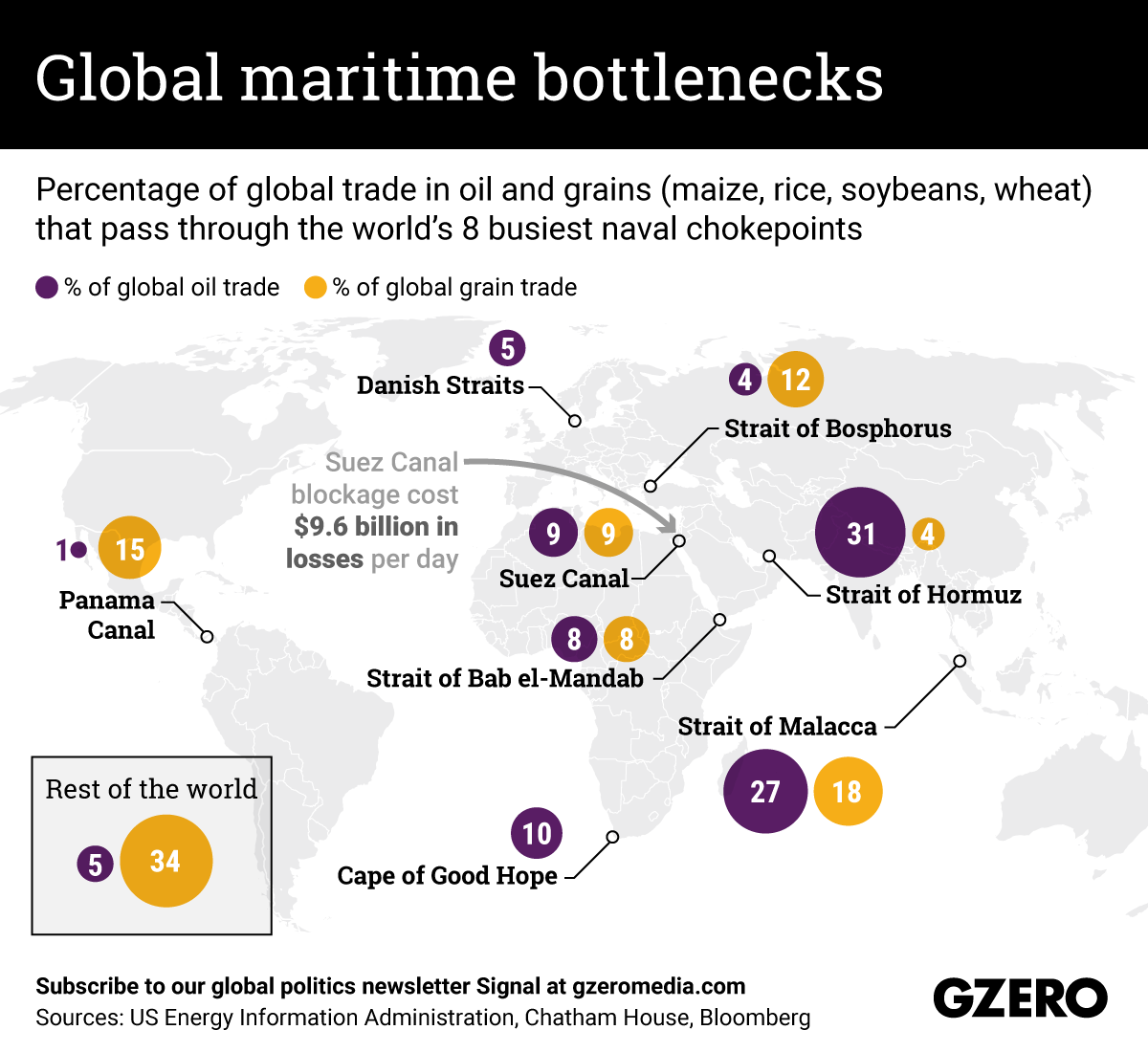Gabriella Turrisi
Traffic finally resumed on Monday in the Suez Canal, almost a week after a massive container ship ran aground, causing a logjam of hundreds of vessels on either end of the busy waterway. The recent disruption in the Suez — which links the Mediterranean to the Red Sea via Egypt and accounts for 10 percent of global maritime shipping volume — has caused significant damage to global supply chains already overstretched by rising demand due to the pandemic. Analysts say that the disruption from the delays could still have an impact for several weeks. But this canal is just one of a host of naval chokepoints worldwide. We take a look at the busiest maritime bottlenecks, along with their share of global trade in oil and grains.
From Your Site Articles
- OVER THE TOP: ARCTIC SHIPPING LANES - GZERO Media ›
- QUAD supply chain strategy to consider values; new AI-powered weapons - GZERO Media ›
- Want to help poor countries now? Open your markets to their farmers, World Bank chief tells wealthy nations - GZERO Media ›
- How did we get to today's supply chain mess? - GZERO Media ›
- The shipping container shortage that’s wreaking havoc on the global supply chain - GZERO Media ›
